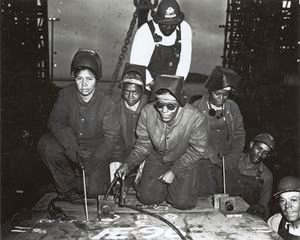
In some fairly good news for workers who want to live a full life, but work in foundries or manufacture brick, concrete blocks, stone counter tops, OSHA announced last week that it would begin enforcement of the silica standard for General Industry and Maritime workers on June 23. For the first 30 days, however, no citations will be issued to employers who violate the standard as long as OSHA determines that they are making “good faith efforts to meet the new standard’s requirements.”
If OSHA determines during an inspection that the employer is not making “any efforts to comply,” then inspectors can conduct air monitoring and “consider” citations, but any proposed citations would have to be approved by the National Office.
Exposure to silica dust, which is created when cutting, sawing, grinding, drilling, and crushing stone, rock, concrete, brick, block, and mortar, can cause cancer, silicosis, COPD and kidney disease. The new OSHA standard, issued under the Obama administration, reduces the permissible exposure limit for crystalline silica over an eight-hour shift to 50 micrograms per cubic meter of air. This is about half of the previous limit for General Industry, and about one-fifth of the old limit for the construction industry.
The final part of the silica standard, affecting hydraulic fracturing (fracking) in the oil and gas industry, comes into effect June 23, 2021. In addition, a court decision which upheld the standard last year, ordered OSHA to determine whether or not it needs to implement work removal protection where sick workers can be temporarily removed from jobs involving silica exposure with full pay and benefits.
Nothing New
Limiting citations to only those employers not acting in good faith is not unprecedented for OSHA. The agency also postponed citations for good faith efforts when the construction standard for silica came into effect, and under the Obama administration, OSHA announced similar enforcement delays on more than one occasion, for example when implementing its new residential fall protection requirements in 2011.
Generally, OSHA inspectors hate these “good faith” exemptions because it is difficult to prove that an employer was not acting in good faith or that they aren’t making “any” efforts to comply. The residential fall protection enforcement delay, unlike the current silica delay, laid out specific criteria for inspectors to use to determine whether an employer was acting in “good faith” by showing such actions as “requesting and scheduling an On-site Consultation visit, ordering protective fall equipment for its employees, or performing a documented evaluation of feasible means of abatement.” No such “good faith” criteria appears in the current memo, issued by Acting Deputy Assistant Secretary Galen Blanton.
The bottom line is that except for some hard-to-prove “bad faith” exemptions, what we’re seeing here is a 30-day delay in enforcement of the general industry silica standard. It’s not really necessary — employers have been on notice since June 2016 that the standard would come into effect this month — but not as bad as the 3 month delay in the construction standard last year, which was followed by additional month of “good faith” non-enforcement.
Given what’s going on in other regulatory agencies (like EPA), the fact that the standard will be in full effect, 30 days late, is not the worst news — especially if you’re lucky enough to be working for a “good faith” employer and there aren’t too many “bad faith” employers out there who will take advantage of the delay to sicken and kill their workers for another month.
Lives depend on it.